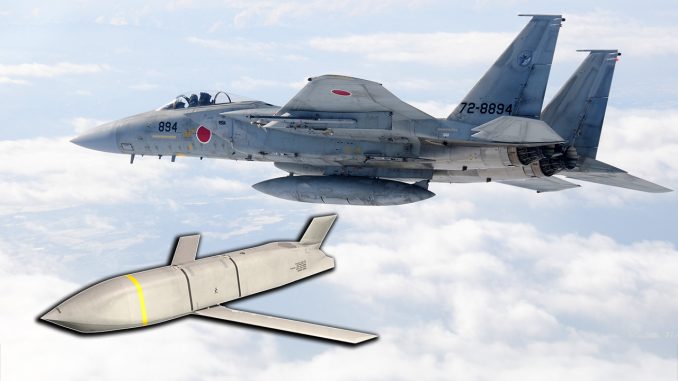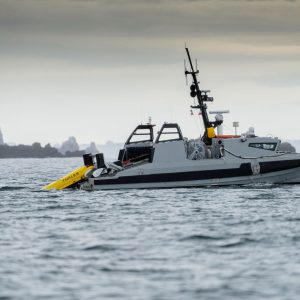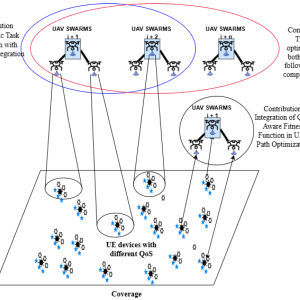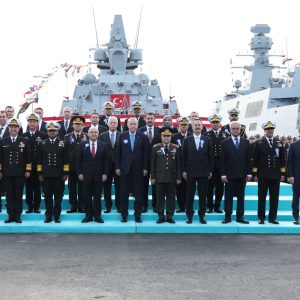The strategic decision by Japan Approves AGM-158B JASSM-ER for Its F-15J Fleet. Japan’s approval to acquire the AGM-158B Joint Air-to-Surface Standoff Missile-Extended Range (JASSM-ER) for its F-15J fleet marks a significant enhancement in the nation’s defense capabilities. This move is a critical component of Japan’s ongoing efforts to modernize its military forces in response to evolving regional security challenges. The integration of the AGM-158B JASSM-ER will provide the Japan Air Self-Defense Force (JASDF) with a formidable long-range strike capability, bolstering its deterrence and operational effectiveness.

Strategic Context and Regional Security
Geopolitical Tensions and Defense Modernization
Japan’s decision to enhance its F-15J fleet with the AGM-158B JASSM-ER is driven by the increasing security challenges in the Asia-Pacific region. The geopolitical landscape is marked by the growing military assertiveness of neighboring countries, territorial disputes, and the proliferation of advanced weaponry. In this context, Japan’s strategic posture requires a robust and flexible defense capability to safeguard its national interests.
Enhancing Deterrence and Response
The acquisition of the AGM-158B JASSM-ER aligns with Japan’s broader defense strategy, which emphasizes deterrence through capability development and strategic partnerships. The long-range precision strike capability of the JASSM-ER enhances Japan’s ability to respond to potential threats swiftly and effectively. This acquisition also complements Japan’s commitment to maintaining a credible defense posture while contributing to regional stability.
AGM-158B JASSM-ER: A Technological Leap
Overview of the AGM-158B JASSM-ER
The AGM-158B JASSM-ER is a long-range, precision-guided standoff missile developed by Lockheed Martin. It is designed to engage high-value, well-defended targets with exceptional accuracy. The missile features a low observable airframe, advanced guidance systems, and a 1,000-pound class penetrator and blast fragmentation warhead, making it a potent asset for modern air forces.
Technical Specifications
Range and Performance: The JASSM-ER boasts an impressive range of over 925 kilometers, allowing it to strike targets from a considerable distance, thereby reducing the risk to the launching aircraft. This extended range is a significant upgrade from the baseline JASSM, which has a range of approximately 370 kilometers.
Guidance and Accuracy: The missile employs a combination of GPS-aided inertial navigation and an imaging infrared seeker for terminal guidance. This dual-mode guidance system ensures high precision, enabling the JASSM-ER to accurately engage both fixed and relocatable targets under various operational conditions.
Stealth and Survivability: The JASSM-ER’s low observable design minimizes its radar cross-section, enhancing its survivability against sophisticated air defense systems. This stealth capability, coupled with its extended range, allows the missile to penetrate heavily defended airspace and deliver its payload with minimal risk of interception.
Operational Flexibility
The integration of the AGM-158B JASSM-ER into Japan’s F-15J fleet significantly enhances the operational flexibility of the JASDF. The missile’s long-range capability enables Japan to project power beyond its immediate periphery, deterring potential adversaries and providing a credible response option in the event of a conflict. Additionally, the JASSM-ER can be employed in a variety of mission profiles, including preemptive strikes, suppression of enemy air defenses (SEAD), and strategic interdiction.
Modernizing Japan’s F-15J Fleet
F-15J Eagle: A Proven Air Superiority Fighter
The F-15J Eagle has been a cornerstone of Japan’s air defense since its introduction in the early 1980s. Developed by McDonnell Douglas (now Boeing), the F-15J is a license-built variant of the U.S. Air Force’s F-15C Eagle. It is renowned for its exceptional speed, agility, and combat performance, making it one of the most capable air superiority fighters in the world.
Upgrades and Enhancements
To maximize the potential of the AGM-158B JASSM-ER, Japan is undertaking a comprehensive modernization program for its F-15J fleet. This program includes upgrades to avionics, radar systems, and weapon integration capabilities. Key enhancements include:
Advanced Radar Systems: The installation of advanced Active Electronically Scanned Array (AESA) radars significantly improves the F-15J’s detection and tracking capabilities. AESA radars offer superior range, resolution, and electronic warfare resilience compared to legacy radar systems.
Avionics and Mission Systems: Modernizing the F-15J’s avionics and mission systems ensures seamless integration with the JASSM-ER. This includes upgrades to the aircraft’s fire control systems, data links, and cockpit displays, providing pilots with enhanced situational awareness and targeting precision.
Weapon Integration: The F-15J’s structural modifications and software updates enable the carriage and employment of the AGM-158B JASSM-ER. This integration is critical for leveraging the full operational potential of the missile, allowing for precision engagement of high-value targets from standoff ranges.
Training and Operational Readiness
Effective utilization of the AGM-158B JASSM-ER requires comprehensive training for JASDF personnel. Pilots and ground crews undergo rigorous training programs to familiarize themselves with the missile’s capabilities, mission planning, and employment tactics. This training ensures that the JASDF can maximize the operational effectiveness of the JASSM-ER while maintaining high levels of readiness.
Strategic Implications and Regional Impact
Deterrence and Power Projection
The acquisition of the AGM-158B JASSM-ER significantly enhances Japan’s deterrence posture. The missile’s long-range strike capability provides Japan with the means to hold adversary targets at risk, thereby deterring potential aggression. This capability also strengthens Japan’s ability to project power and contribute to regional stability.
Bilateral and Multilateral Defense Cooperation
Japan’s decision to acquire the AGM-158B JASSM-ER underscores the importance of its strategic partnerships, particularly with the United States. The integration of U.S.-developed advanced weaponry into Japan’s defense architecture highlights the close defense cooperation between the two allies. Additionally, Japan’s enhanced capabilities contribute to broader multilateral security frameworks, reinforcing collective defense efforts in the Asia-Pacific region.
Strategic Balance and Regional Security Dynamics
The introduction of the AGM-158B JASSM-ER into Japan’s arsenal is likely to influence the strategic balance in the Asia-Pacific region. Neighboring countries may perceive this acquisition as a shift in the regional security dynamics, potentially prompting adjustments to their own defense postures. However, Japan’s commitment to transparency and defensive use of its military capabilities aims to mitigate regional tensions and promote stability.
Conclusion
The approval of the AGM-158B JASSM-ER acquisition for Japan’s F-15J fleet represents a significant milestone in the nation’s defense modernization efforts. This strategic enhancement provides the Japan Air Self-Defense Force with a formidable long-range precision strike capability, bolstering its deterrence, operational flexibility, and contribution to regional security. As Japan continues to navigate a complex and evolving security environment, the integration of advanced weaponry such as the JASSM-ER underscores its commitment to maintaining a robust and credible defense posture.










